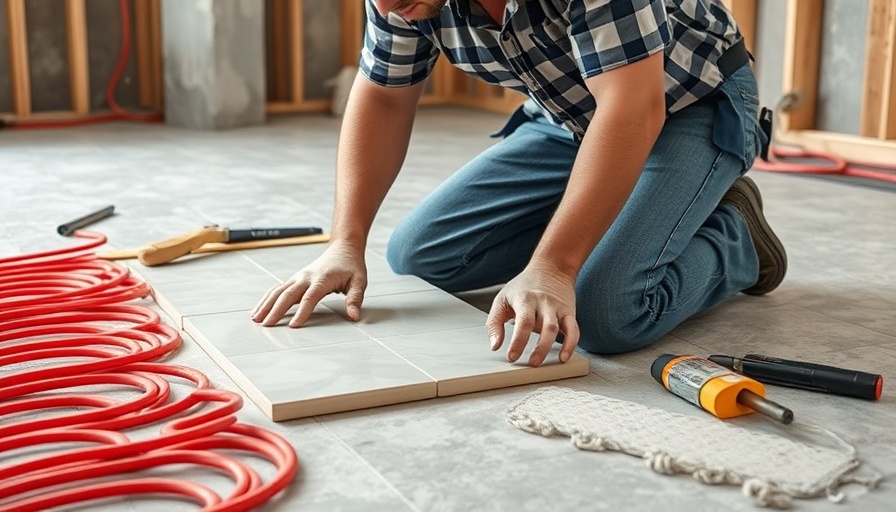
The Quiet Revolution in Sustainable Heating Solutions
As the world accelerates its shift towards sustainability, intriguing innovations are emerging beneath our feet—specifically in the realm of heating systems. The newfound attention is not on visible upgrades such as rooftop solar panels or exterior facades; rather, the transformative changes often occur with flooring solutions, hidden from view but revolutionary in impact. Homeowners are increasingly gravitating towards modern alternatives that are not only energy-efficient, but also enhance indoor comfort and sustainability.
Shifting Away from Traditional Heating
Gone are the days when heavy radiators and gas-fired systems dominated home heating. Today, lighter alternatives like damp construction systems are on the rise, particularly due to their various advantages over traditional options. One notable innovation is the adoption of dry construction methods, where systems are installed using lightweight panels instead of heavy cement. This not only streamlines the installation process, allowing for quicker renovations, but also enhances flexibility in design, enabling homeowners to tailor their heating systems more effectively.
Eco-Friendly Innovations in Construction
- Dry construction not only lightens the load but also aligns with sustainable building practices, showcasing features like reusability. All components, from panels to pipes, can often be repurposed in future projects. This reduces waste significantly, making it an ideal choice for renovations, particularly in homes with wooden floors where traditional wet systems aren't applicable.
Importance of Proper Installation
But sustainable systems are only as good as their installation. Quality installation plays a critical role in both immediate functionality and long-term efficiency. Poor installation can lead to heat loss and operational problems, negating environmental benefits. Preparation is key: flat subfloors, intelligent layout designs, and meticulous adherence to installation guidelines can guard against inefficiencies.
Maximizing Comfort with Minimal Energy Use
The effectiveness of a well-installed underfloor heating system is often unnoticeable—the desired comfort breeds warmth without the harsh drafts and dryness typically associated with traditional heating methods. Coupled with a heat pump or other low-temperature source, homeowners can experience significant energy savings.
Implications for Sustainable Living
The subtle shift towards underfloor heating represents a larger trend towards sustainable living without the inherent fuss of outdated systems. The comfort provided by these advanced setups is essential; they deliver warmth evenly across spaces without loss, exemplifying the future of energy-efficient home environments. Emphasizing technology that enhances comfort while conserving resources, these systems meet the growing demand for sustainability in our daily lives, proving that the most significant innovations often lie beneath the surface.
The Future of Energy Efficiency
As we look ahead, the importance of innovations like dry construction floor heating solutions will only deepen. With societal pressures to combat climate issues, efficient heating systems could define the future trajectory of home design. We urge readers to keep informed about the benefits of these advancements and explore how they can be integrated into their own homes.
To stay abreast of developments in sustainable living and innovative building practices, subscribe to our newsletter. Join the movement towards a more efficient and ecologically responsible home today!
 Rij toevoegen
Rij toevoegen






 Rij toevoegen
Rij toevoegen



Write A Comment